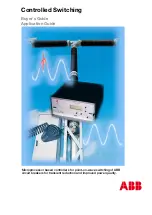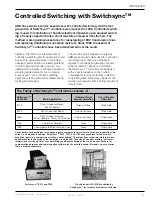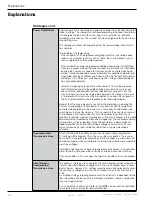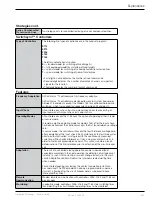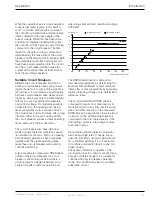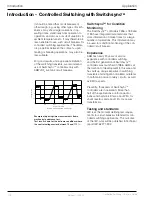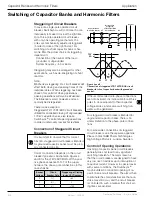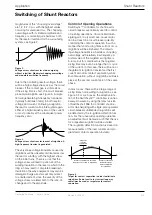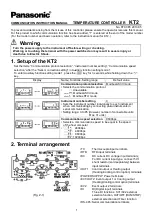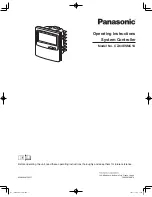
Controlled Switching — Buyer´s Guide
B-7
Edition 2, 2006-09
Explanations
Explanations
Circuit Breaker Characteristics
Single-pole or
Three-pole Operation
When a single-pole operated circuit breaker is controlled, a separate output
command is given to each pole.
Three-pole operated circuit breakers can be arranged with mechanical
staggering, making them suitable for controlled switching. In these cases,
there will be a built-in mechanical spread (phase shift) between the poles
that is appropriate for optimized switching of the load at the specified
frequency. The mechanical spread is arranged to reach proper switching
conditions with minimum staggering (which for grounded loads means
switching in reversed phase rotation order).
The suitability/need of controlled opening of a three-pole operated circuit
breaker depends on the load conditions and the relationship between the
closing and opening speeds. Note that time staggering for opening will be
reversed in comparison to closing (which normally is the preferred).
Note that it is not always possible to combine controlled closing and
controlled opening with three-pole operated circuit breakers.
For the control of a single-pole operated circuit-breaker individual switching
commands are given to each pole respectively. In that case the non-
simultaneity is achieved by electrical means and the staggering is named
electrical staggering.
Interface controller-
mechanism
All circuit breakers having operating coils are suitable for direct connection
to the controller.
For special operating mechanisms having no operating coils, like the Motor
Drive™ additional resistors, simulating the coils must be installed in parallel
with the output command circuits. Suitable resistors are for example ELFA
60-674-33
.
Staggering
In controlled switching, the optimum targets for each circuit breaker pole
do not coincide. When three-pole operated circuit breakers are used,
a mechanical phase shift must be built in. This mechanical phase shift,
staggering, ensures that contact touch and/or contact separation for all
poles occur at intended instants. This mechanical staggering is achieved
by special design of the mechanical linkages in the bottom mechanism
housings.
For a three-pole operated circuit breaker, only one pole, the master pole, is
controlled while the other two operate in slave mode.
For single-pole operated circuit breakers the staggering is electrically
arranged by non-simultaneous individual switching commands.
Note! All details about the load must be well known before offering a
mechanically staggered circuit breaker.
RDDS
Rate of Decrease of Dielectric Strength. Circuit breaker characteristic that
describes the rate of fall of the voltage withstand at closing of a circuit
breaker.
For proper function, the value of RDDS should exceed the maximum
derivative of the applied voltage. Statistical variation of RDDS should be low.
RRDS
Rate of Rise of Dielectric Strength. Circuit breaker characteristic that
describes the rate of rise of the voltage withstand at opening of a circuit
breaker. The value of the RRDS defines the minimum arcing time needed
for reignition-free interruption of inductive loads.
Closing Time
Time from energizing the closing coil until contact touch in the circuit breaker.

